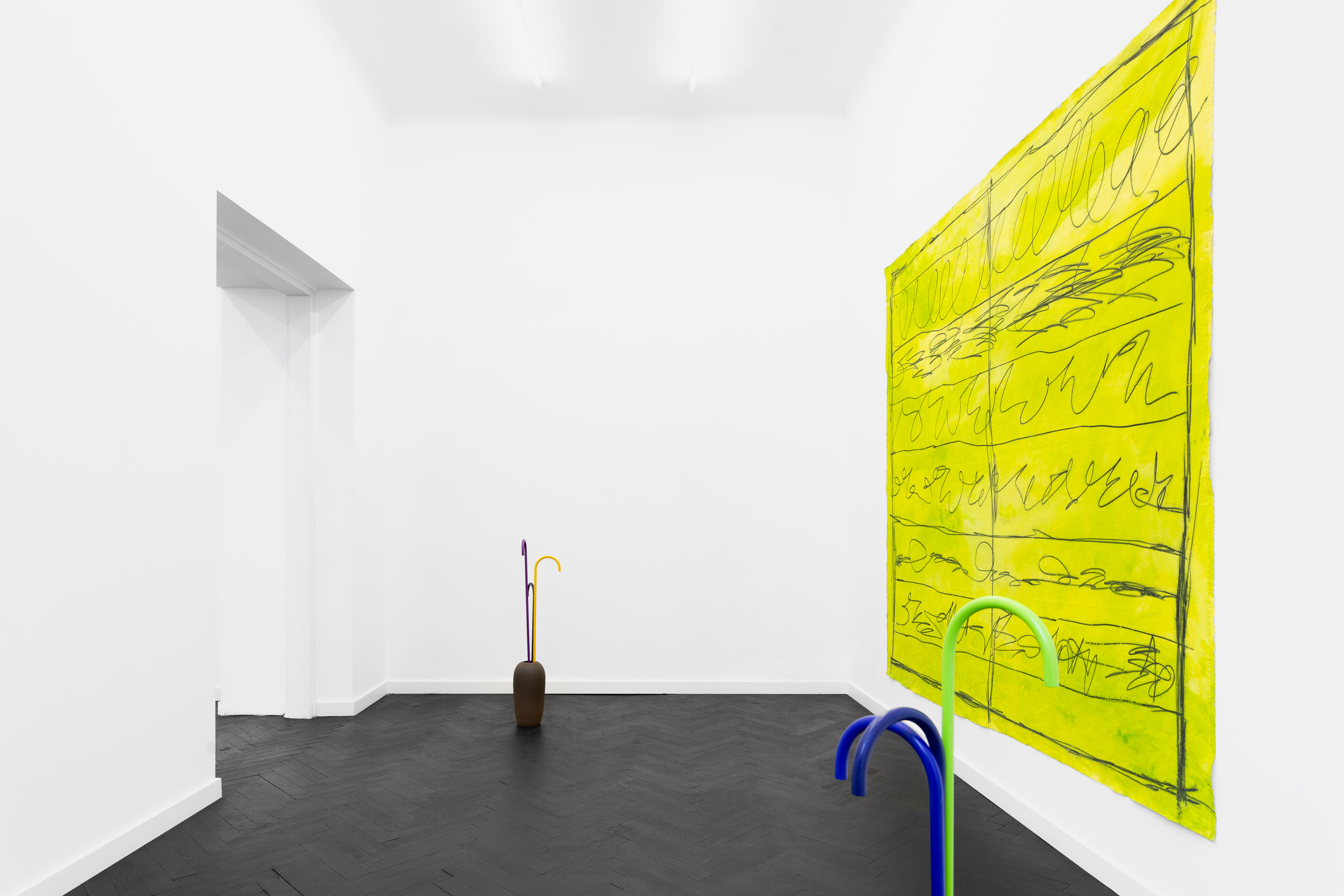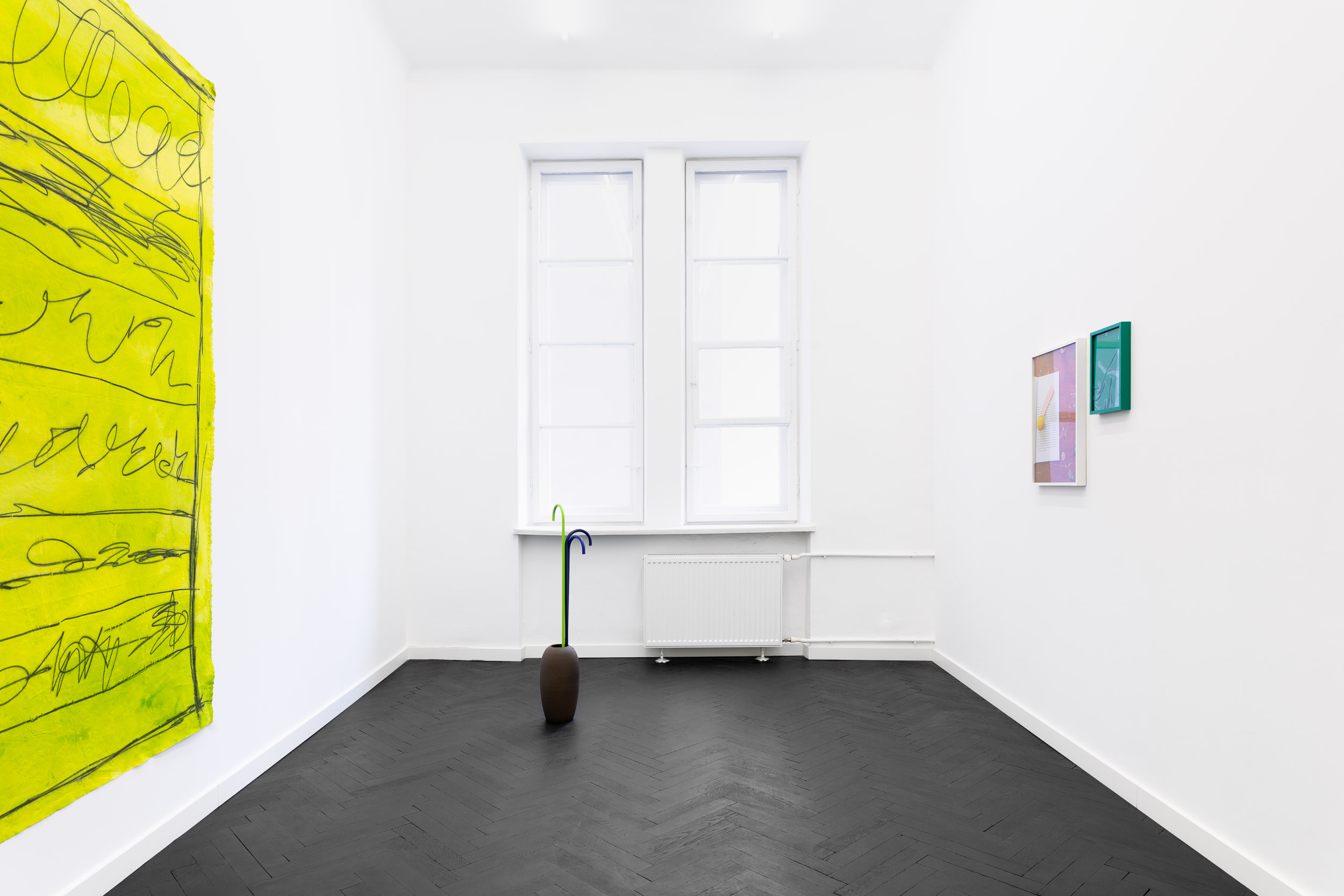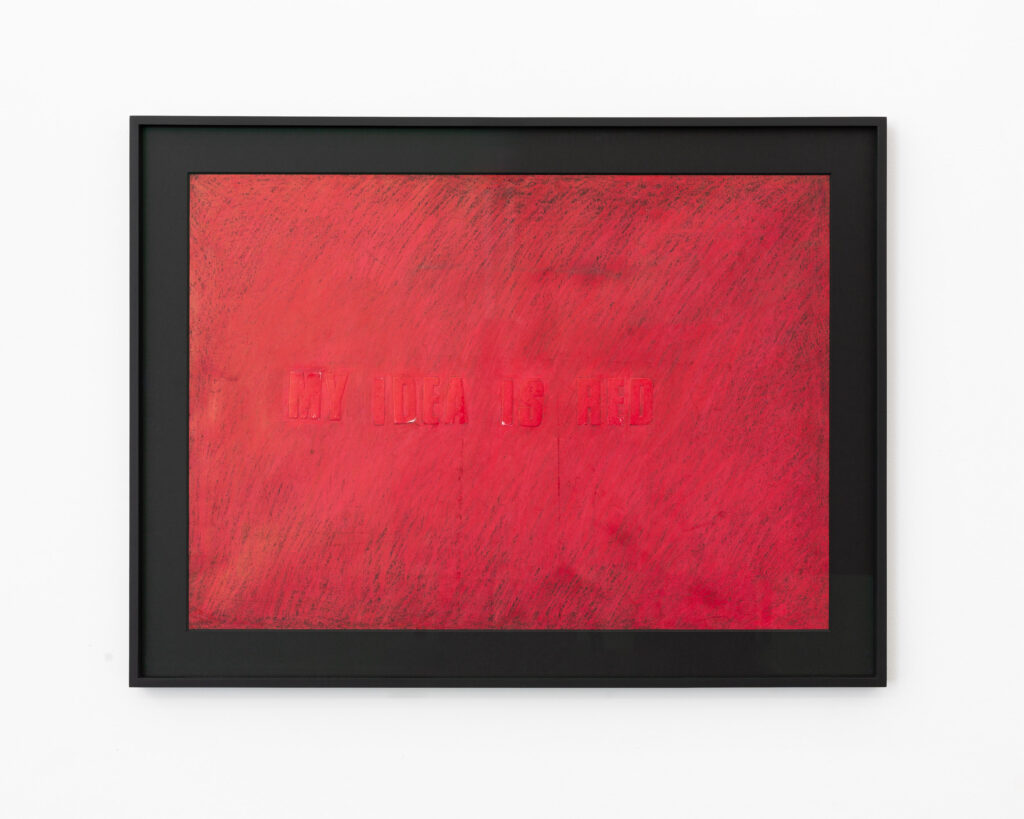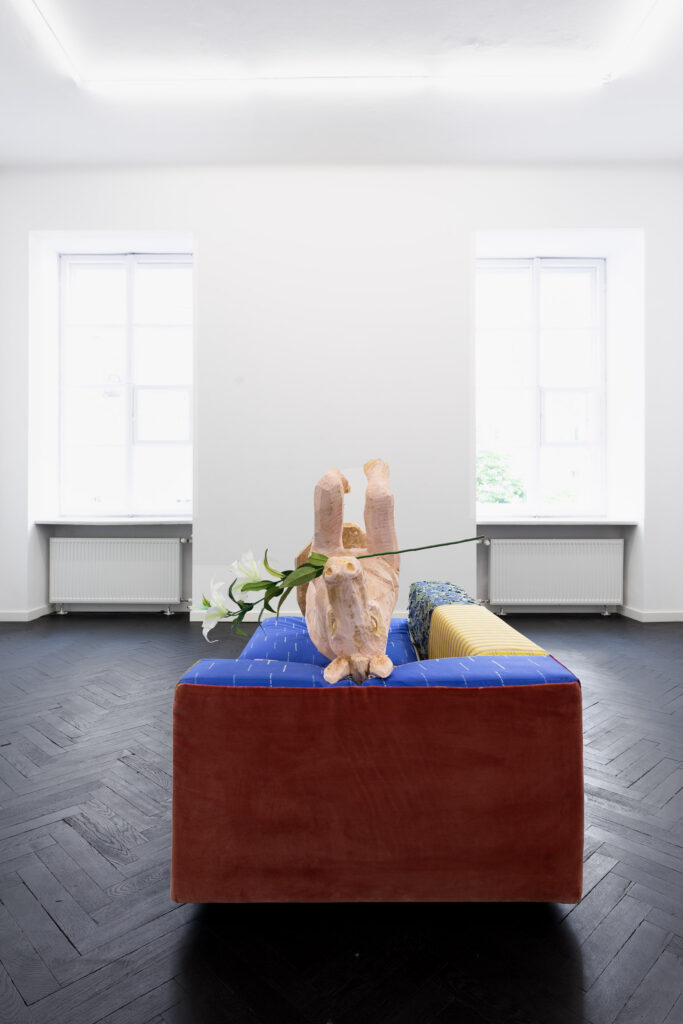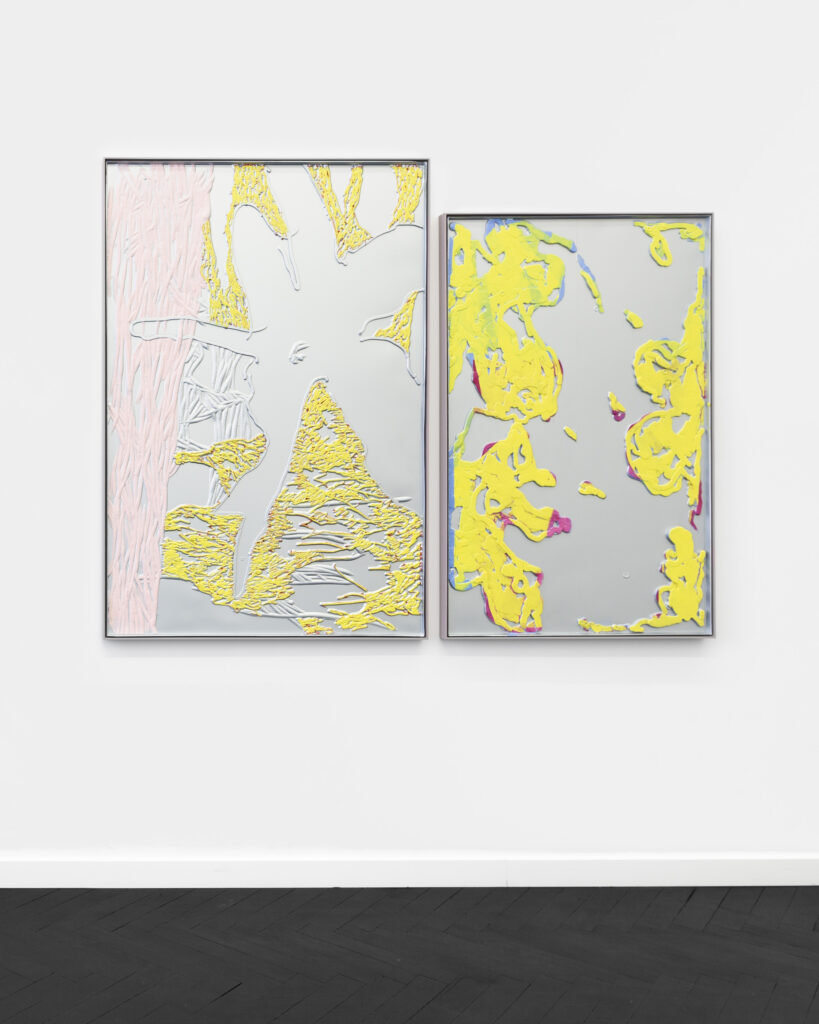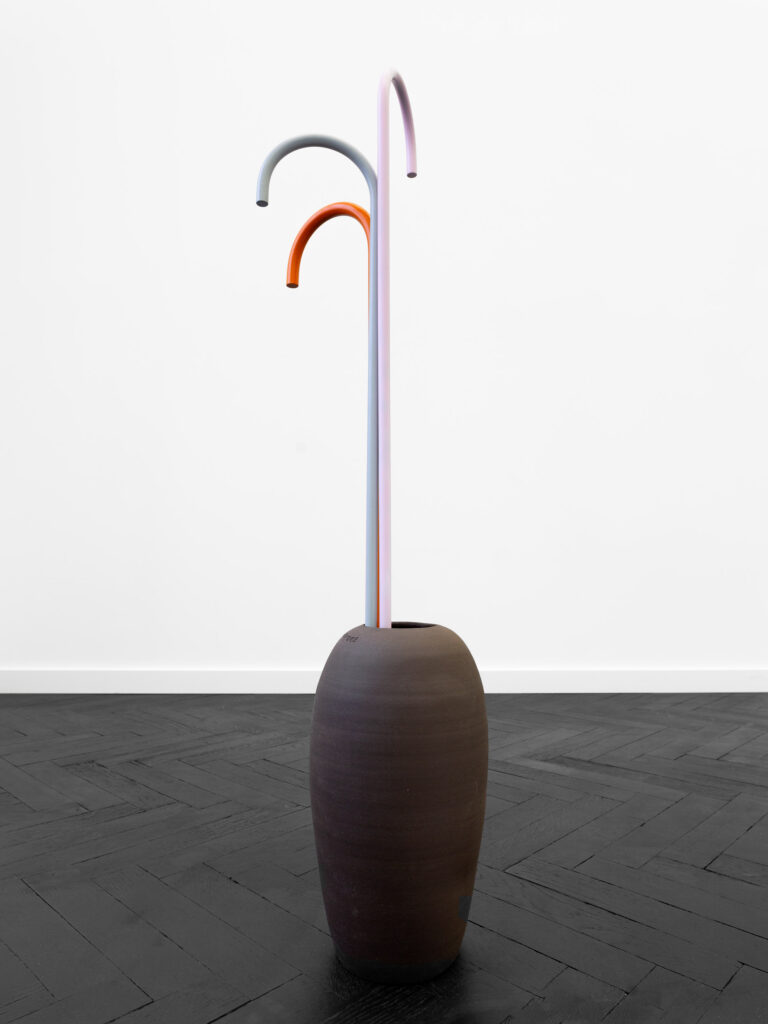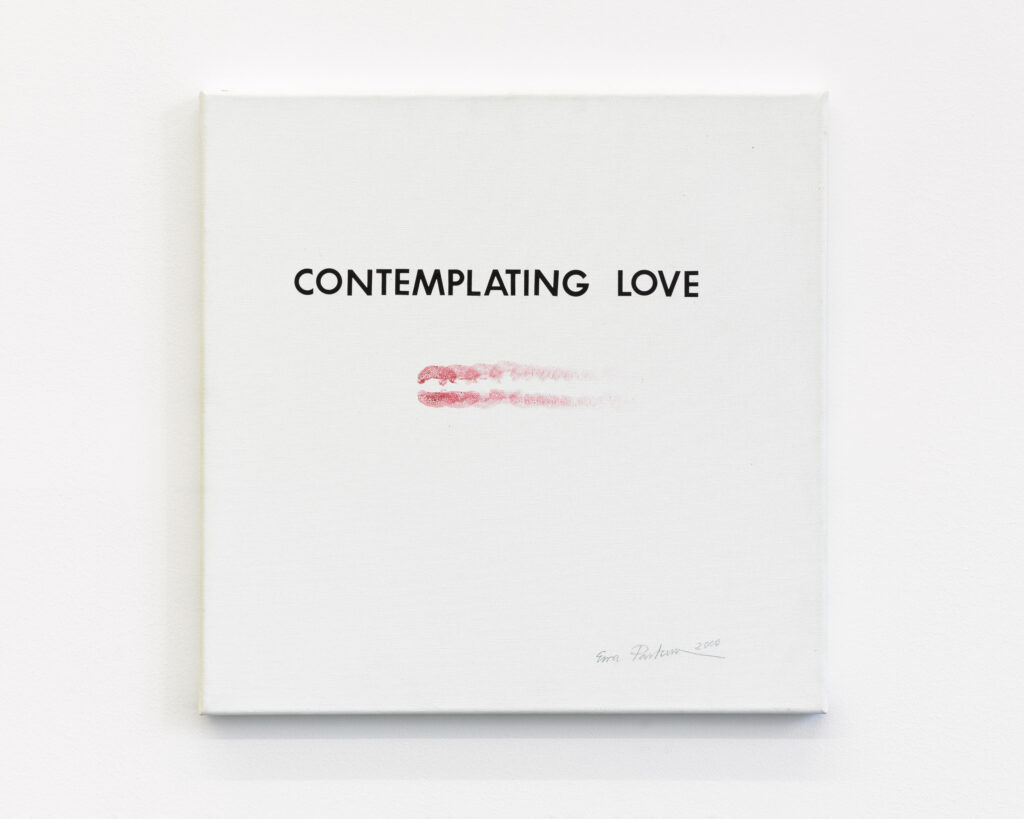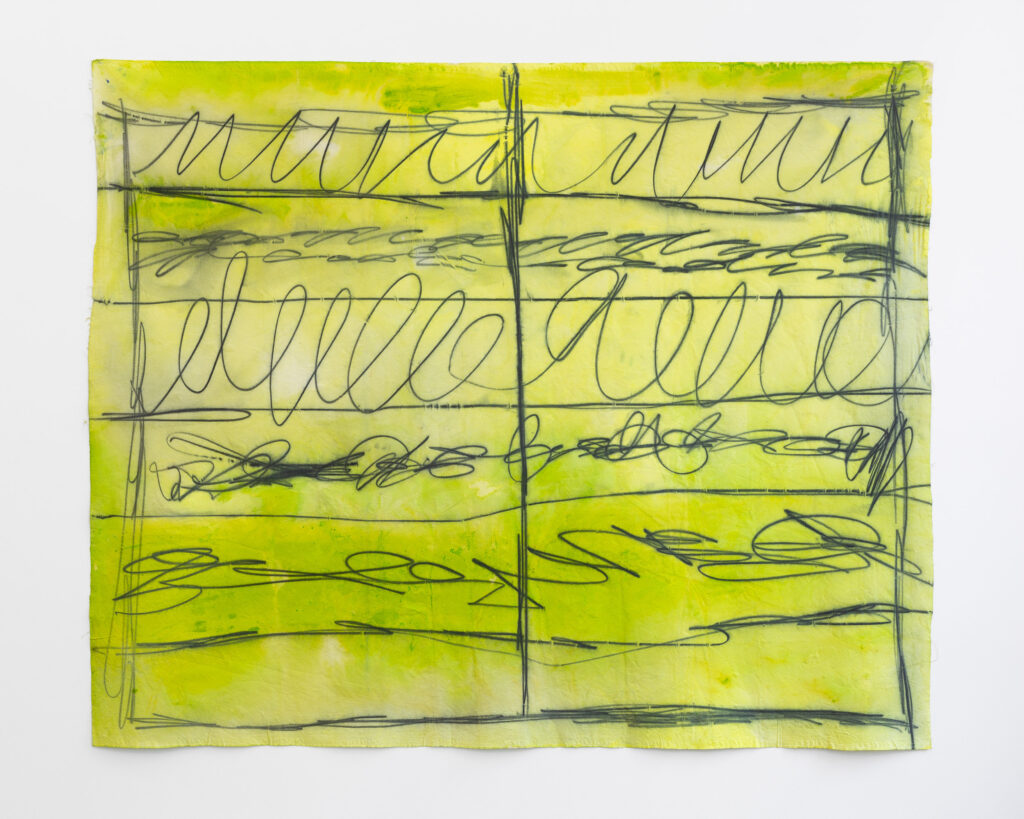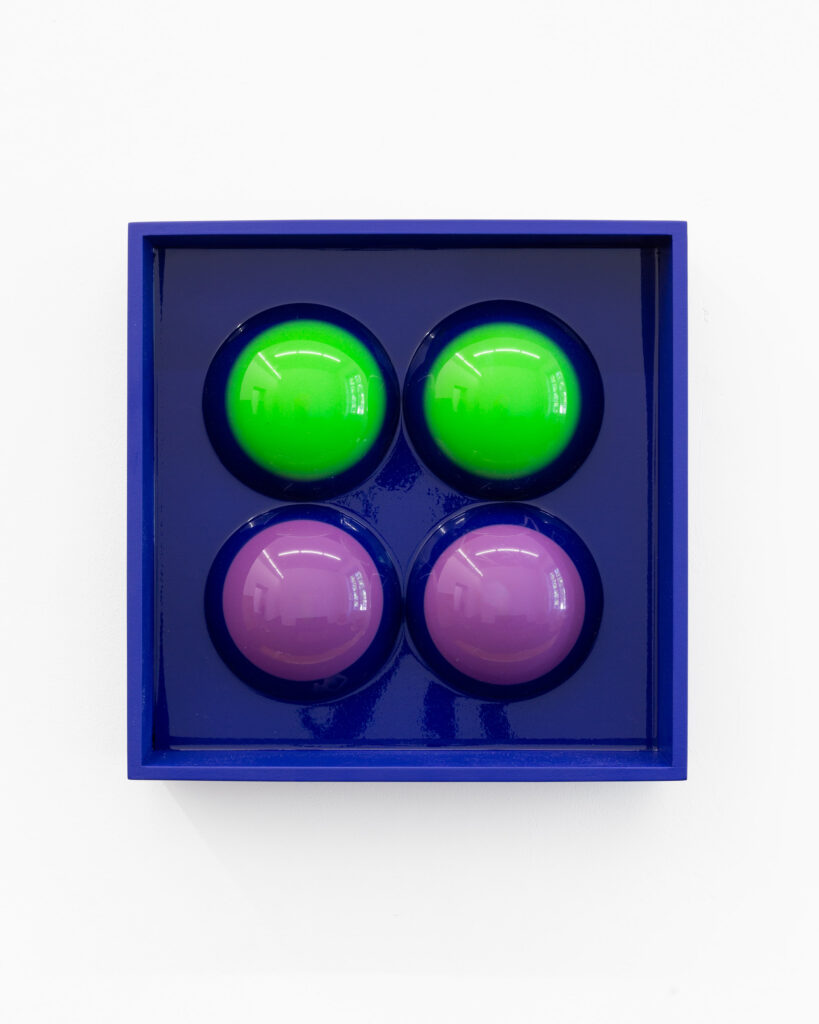Vanessa Disler
Hannah Sophie Dunkelberg
Ewa Partum
Vanessa Safavi
Secret Language
May 18 – June 22, 2024
Opening:
Saturday, May 18
5 – 8 pm
The exhibition explores themes of communication, comprehension, and misunderstanding in language, which can function as both poetry and a source of hatred. The works of all the artists included utilize text and codes in various ways – using letters, creating systems, and diagrams. The text by Hendrike Nagel accompanies the show.
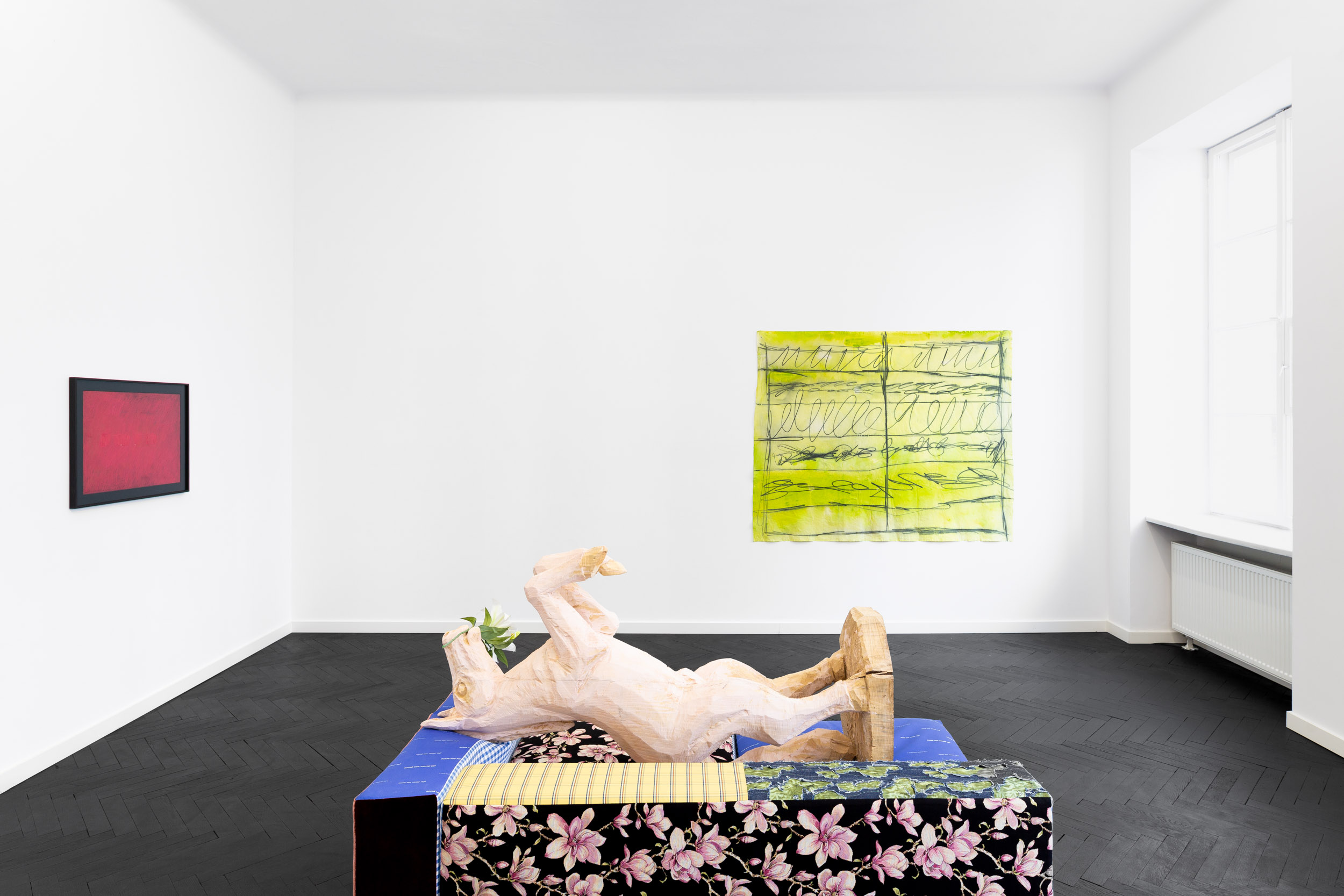
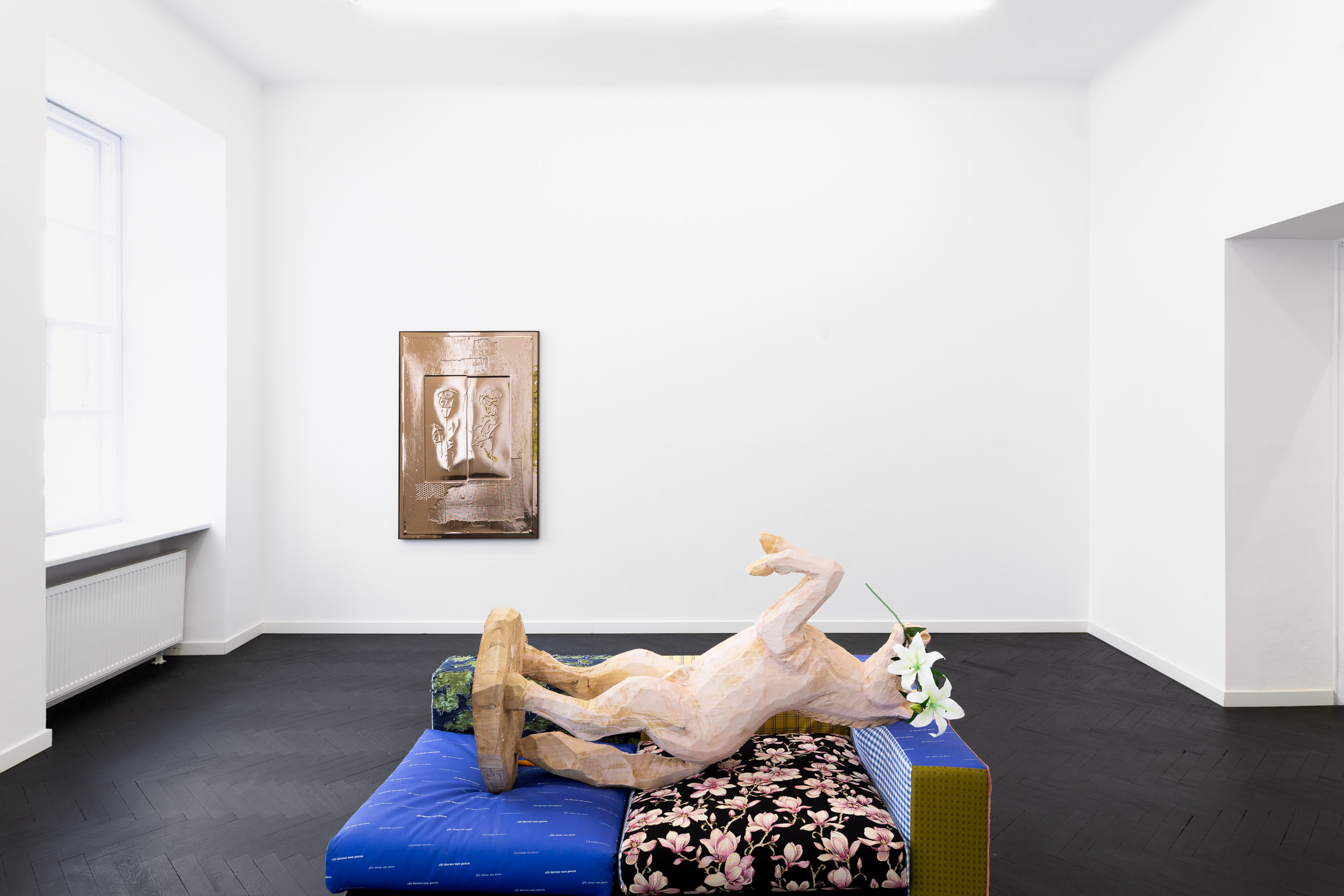

Secret Language
by Hendrike Nagel
The secret language may be a language born out of substitution and silence. Out of the torment of having to speak up. Of finding a voice. It may be a language that has to assert its presence in its absence. That has to claim space by reappropriating its own body, its own mouth. As a symbol of speech as much as a symbol of bodily autonomy. It may be a language that constitutes itself as a voice against objectification. A language that toys with the idea of tautology, which it ultimately resists, refusing to reinforce existing stereotypes. It may be a language that is neither black nor white. Adding depth and nuance. Pointing out classificatory errors. It may be a language that only allows itself to be its own fantasy. Wrecking partitions, classes, rhetoric, and regulations. It may be a language that always attempts to be neither logical nor rational nor linear. That may not believe in truth or reason. Never objectified nor generalized. It may be a subjectivity that will never be owned nor understood. Its imagination may be inexhaustible, rich in individual constitutions. It may loop back onto itself, with itself. It may be a circulating mode of protest.
The secret language may be a language that consists of more than just words. Everything speaks! It may be a language that exists in the subtext. That is subversive. That may be able to fluidly go backwards in time as well as forward. It may draw from a multitude of sources that are not pre-spoken and not pre-coded. As marks, fragments, spurs, lines, dots, and curves. In between and out of syntax. In between and out of all the languages: the language of color, of objects, of movements, of materials, of gestures, of symbols, of ... It may be a language that encapsulates both speculation and understanding. As liminal thinking. It may be a language that outlines the process of recognition. As the recognition of the unconscious where everything repressed manages to survive. Its meaning may be definitively unfixed. As an interpretation of an interpretation of an interpretation. As a subversion of comprehension. More than a dominant figure, it manifests itself as a parenthetical remark. A remark that scripts an alternate imagination of the world. A notation that simultaneously imbues thinking and unthinking. It may be the weaving of patterns that does not confine but opens. That draws relations, draws individual stories. It may be the aleatory position of openness.


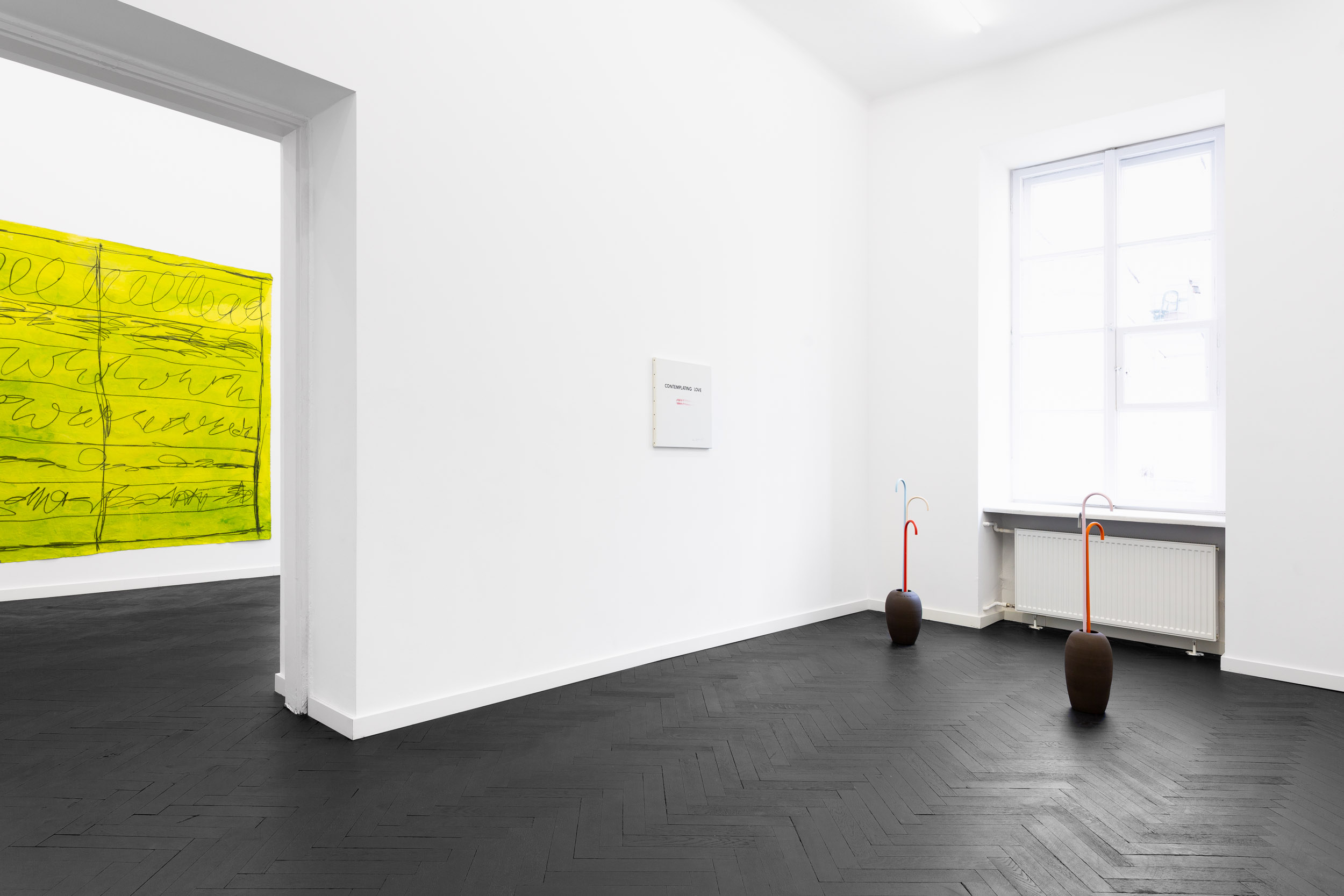
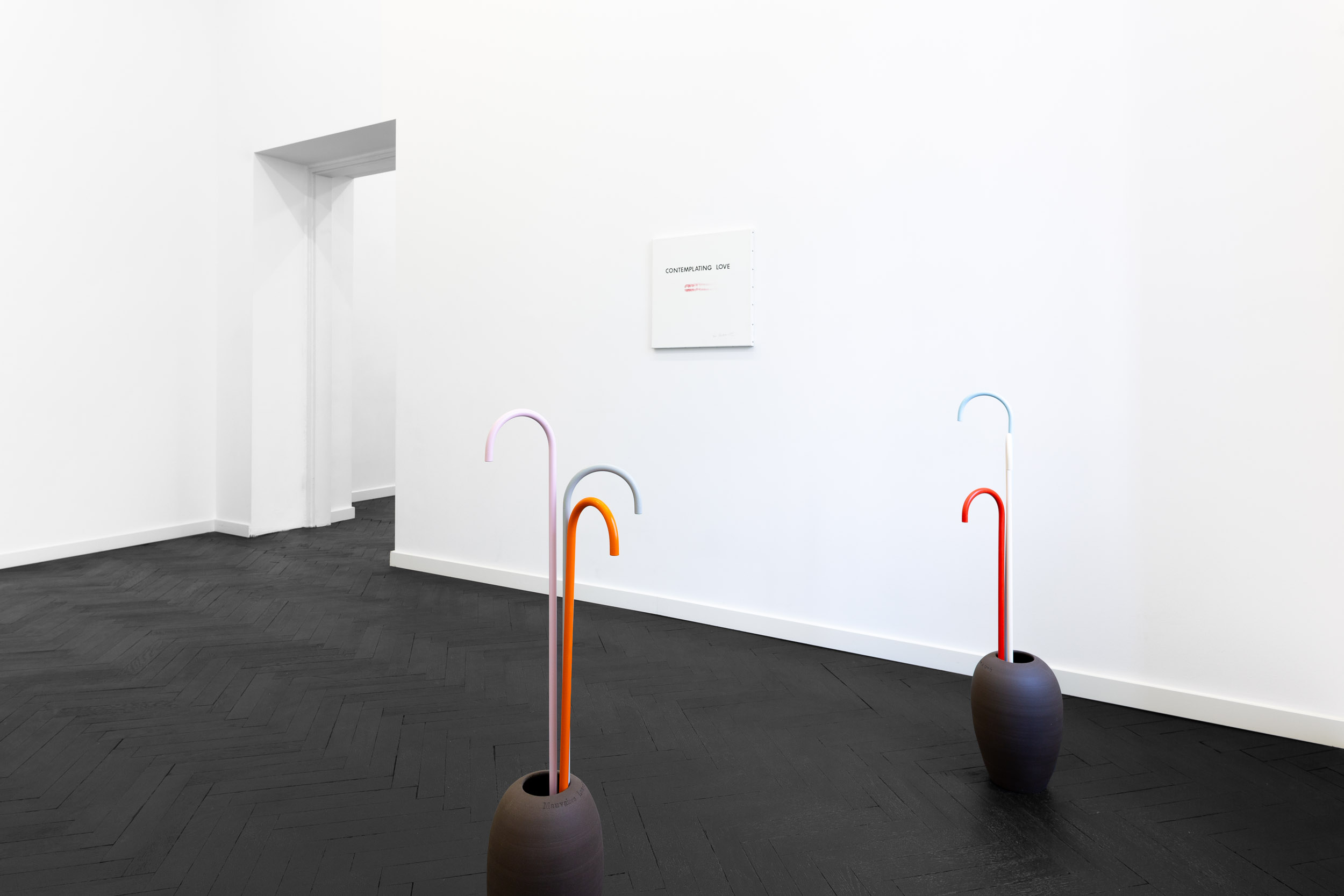
The secret language may be a language that revels in the wonder of strangeness and complexities. It may be the acceptance of misunderstandings and the experience of disability and ability. Of always being several, always being different. Not indifferent! As it does not believe in the whole nor in norms. It may be an elastic language that is not territorial but stretches, stretches to be soft, accidental, and transformative as well as consistent, loyal, and reliable. It occurs simultaneously – in several bodies, several people, several cultures, several places – but never appears the same. It does not believe in identicalness and therefore can never be identified. It may be the resistance of a concrete identity and ideational reality. A sensitive resistance. An alternate act of reception. An alternate act of representation. It may be as much the disbelief in a closed cultural identity as the disbelief in a coherent bodily identity. It may be a language that just accepts that the Other remains foreign. A gap through which alternate modes of belonging appear. It may blend personal histories, still leaving them intact, still giving them their space. It may be the path from object to subject, from subject to object, from enigma to enigma. It may be the intimate sphere of acceptance.
The secret language may be a language of love and of empathy. It may be a language that does not expect but carries. That finds its power in being overshadowed. A power wildly shared but not dominant and not aggressive. As a proposition, uncertain and undirected. It may be a language that does not have spikes, that smoothens its hard edges. As a constant attempt not to hurt but to heal. It may be a language that celebrates the pleasure of containing and retaining, prioritizing listening over speaking, prioritizing implying over stating. It may defy plans, intentions, and resolutions. It may defy the regime of signification and significance. It may be a language that may neither be seen as progress nor success. Not afraid of lacking. It may rather be calming and playful. It may rather be a sleeping language that lingers. It may be a language that puts dominant forms of power to rest. That recognizes exhaustion. Queering their failure. Chi dorme non pecca. He who sleeps, does not sin. It may mean recovery. Its self-criticism may be its strength. Its force may be its fragility and vulnerability. Akin to dreams that can’t be interpreted, you have to receive, to react emotionally. It may be because it may not be. It may be because it doesn’t claim any certainty. It may be a feminist language.
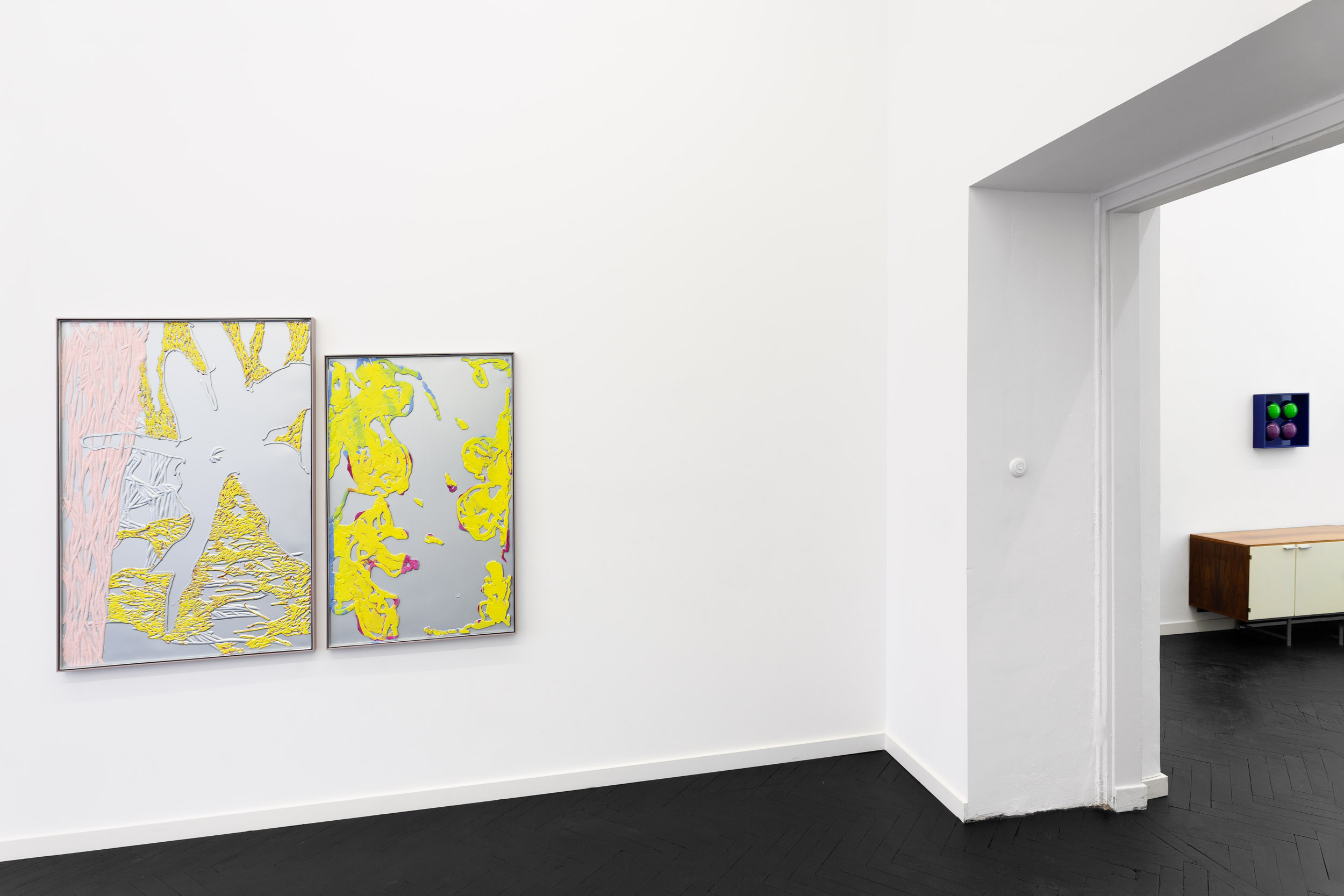
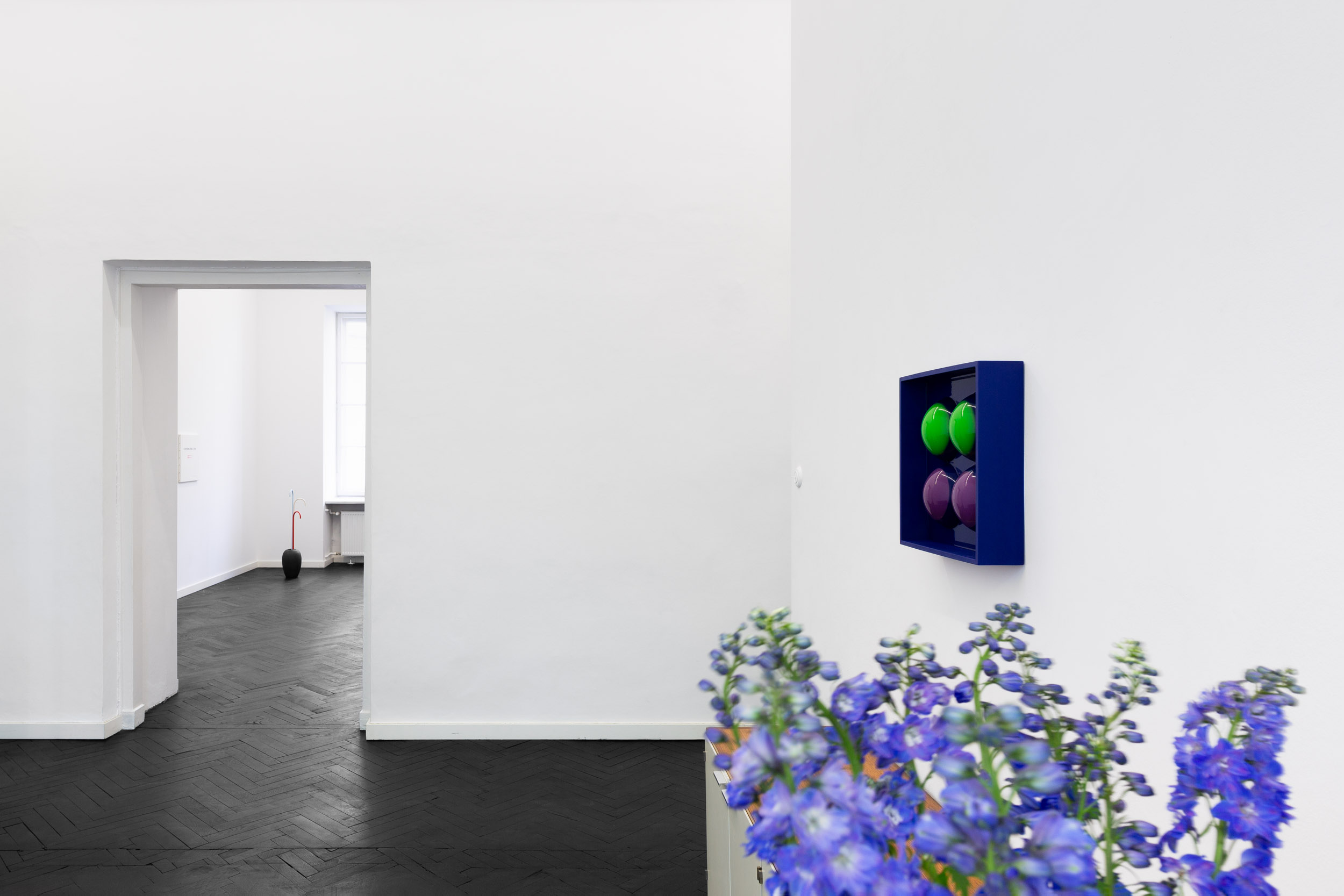

Vanessa Disler
Born 1987 in Vancouver, Canada. Disler’s practice is primarily centered on painting, exploring themes of abstraction, authorship, and signature within a modernist framework. Her approach integrates elements of feminism and psychoanalysis, using painting to process personal and subjective experiences. Her portfolio includes gestural paintings and steel sculptures, often incorporating motifs and symbols from cultural memory and personal history.
Received a BA from Emily Carr University and training from De Ateliers, Amsterdam. Disler's career is marked by significant solo and duo exhibitions, including Light Sleeper (Zurich, 2022) and Big Naturals (Brussels, 2021). She also collaborated with Nicole Ondre in the Feminist Land Art Retreat (2010-2021). In 2024 Disler was nominated for the Swiss Grand Award in Basel. Her art extends to performances and publications, contributing to contemporary art dialogues. She has participated in several residencies, notably at Western Front and Contemporary Art Gallery in Vancouver, underlining her commitment to artistic development and exploration. She lives and works in Berlin.
Born in 1987 in Bonn, Germany. Sculptor, studied at the HfBK, Hamburg University of Fine Arts and completed her studies at the Berlin University of the Arts, UDK, where she studied with Manfred Pernice. Welding, forging, and lacquering the works herself, her labor-intensive practice involves industrial tools and production techniques. The playfulness of shapes and colors in addition to the influence of pop culture contradict the often heavy, cold materials (steel, aluminum, plastic). Interested in the push and pull relationship between the real and the abstract, furniture and other domestic objects and materials serve as an anchor upon which she can experiment. She lives and works in Berlin.
Ewa Partum
Born in 1945 in Grodzisk Mazowiecki, Poland. She is a pioneer of conceptual and feminist art in Central and Eastern Europe. Her work includes body interventions, experimental cinema, photomontages, installations, and visual poetry. Educated at the National School of Fine Arts in Łódź and the Academy of Fine Arts in Warsaw, she initially explored conceptual art's linguistic aspects in the 1970s, focusing on the arbitrary nature of meaning and the materiality of language. Her art engaged in dialogues with traditional canons and feminist themes, emphasizing women's originality and the constraints on female agency. Her provocative series placed her nude figure in key urban spaces, challenging societal norms. From 1972-77, she ran Gallery Adres in Łódź, showcasing and documenting conceptual artists. Since 1983, she has been based in Berlin, focusing on archiving her work and co-managing the “ewa partum museum.” Her art has been featured in major exhibitions and is held in prominent collections worldwide, including MoMA and Tate Modern. In 2024, she received the Lovis Corinth Prize by the Kunstforum Ostdeutsche Galerie in Regensburg. She lives and works in Berlin.
Born in Lausanne, Switzerland. Vanessa Safavi had a traveling, almost nomadic childhood. In 2003, she studied at the Cantonal Art School of Lausanne (ECAL) where she obtained her diploma in visual arts. Artistic residencies have punctuated her career. Along with her artistic activities, she worked as a recorder with the State Secretariat for Migration in Bern (2008-2010), fuelling her research on questions of territories, colonization and migratory flows. In 2018, she resumed studies at the Geneva University of Art and Design (HEAD), obtaining a master’s degree. From the 2010s, Vanessa Safavi enjoyed critical recognition in Switzerland and abroad. Awarded in 2012 by the Illy Prize, then in 2019, by the Irène Raymond Prize, her work is regularly shown in galleries in Berlin, Brussels, Athens, London and Zurich.
Vanessa Safavi’s early research was strongly influenced by her own cultural identity, spanning three countries, two continents. For several years, she explored issues related to population movements, tourism and the notion of exoticism, guided in particular by reading Claude Lévi-Strauss. After this phase nourished by a form of societal commitment, Safavi returned to the fundamentals of sculpture and developed an in-depth exploration of materials. She stretches both physical and symbolic possibilities, and easily jumps from one plastic universe to another depending on the story that interests her. In this wake, rubbers, silicone, resin, plastics quickly become essential elements of her work. Safavi has developed a singular language, sometimes learned, always full of spirit, infused with geometric abstraction and post-minimalism, and as playful as it is sensual. She lives and works in Berlin.


